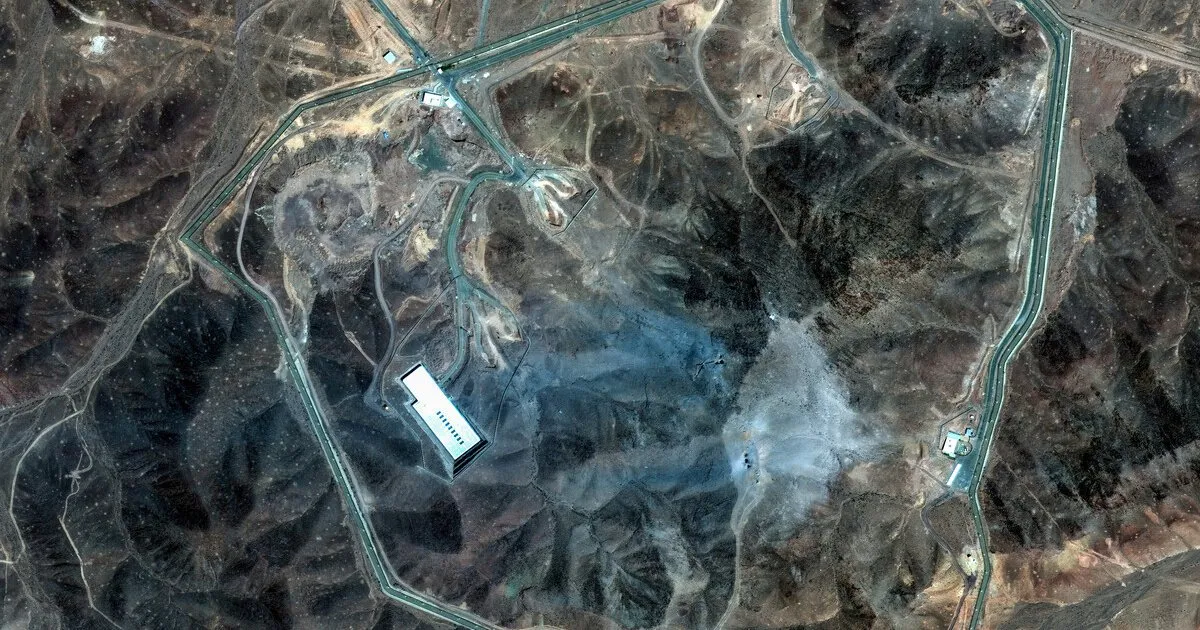
On June 21, 2023, U.S. President Donald Trump revealed that the United States has executed airstrikes on three significant nuclear sites within Iran as part of an operation dubbed “Operation Midnight Hammer.” This military action aligns the U.S. with Israel’s ongoing bombing campaign aimed at disrupting Iran’s nuclear ambitions, which both nations assert are nearing the capability to produce nuclear weapons. Iran, however, has consistently denied these allegations. The campaign commenced on June 13, 2023, escalating tensions in the region.
Operation Midnight Hammer involved a substantial deployment of military resources, including 125 aircraft and specialized B-2 bombers equipped with 30,000-pound bombs known as Massive Ordinance Penetrators, commonly referred to as "bunker busters." These advanced munitions are unique to the U.S. military and are believed to be the only ordinance capable of penetrating Iran’s deep underground nuclear facilities. General Dan Caine, the chairman of the Joint Chiefs of Staff, reported that initial assessments indicated that the three targeted sites—Natanz, Fordow, and Isfahan—sustained “extremely severe damage and destruction.”
The effectiveness of these strikes in curbing Iran's escalating uranium enrichment program remains uncertain. Iran is home to over thirty nuclear facilities, many situated deep underground. Following the strikes, satellite imagery revealed substantial damage at Natanz, which is Iran's largest uranium enrichment site located about 140 miles south of Tehran. The facility suffered further impact from U.S. strikes, including damage to its electric substation and enrichment plants, as noted by the International Atomic Energy Agency (IAEA).
Natanz has been a focal point of international scrutiny since its establishment in 2002. It features several underground structures and has previously been subject to cyber warfare, including the infamous Stuxnet virus, which caused significant disruption to Iran's centrifuge operations. The IAEA has noted that radiation levels outside Natanz remain stable, but internal contamination poses health risks.
Fordow is another critical site, hidden deep within a mountain to protect it from airstrikes. With its advanced missile defense systems, it is considered vital to Iran's nuclear weapons program. Recent U.S. airstrikes have reportedly left Fordow damaged, although Iranian officials claim the facility remains intact. The secrecy surrounding Fordow has led to allegations of covert nuclear weapons production.
Isfahan hosts facilities for converting natural uranium into gas for enrichment. The U.S. targeted this site with over two dozen Tomahawk missiles in a separate strike, damaging several critical buildings but reportedly sparing the nuclear fuel stockpile. The ongoing military actions have raised significant concerns regarding the potential escalation of hostilities in the region.
Despite the targeted strikes, several of Iran’s nuclear facilities, including Arak and Bushehr, remain undamaged. However, the bombing campaign has also extended to other military and civilian infrastructure, leading to significant casualties—over 400 reported deaths—according to Iran’s health ministry. The military actions have prompted retaliatory measures from Iran, including missile strikes against Israel, further escalating tensions in the region.
As a result of the attacks, regional governments have expressed concerns about the potential for nuclear material exposure and the broader implications for nonproliferation efforts. Experts warn that the strikes could lead to long-term repercussions, including increased regional instability and the possibility of asymmetric responses from Iran, such as cyber attacks or terrorist actions.
U.S. Vice President JD Vance and Israeli Prime Minister Benjamin Netanyahu have highlighted the ongoing risks and the need for careful monitoring of Iran's nuclear stockpile. As the situation develops, the potential for further conflict remains a pressing concern for both regional and global security.
The situation in Iran continues to evolve following the U.S. and Israeli airstrikes, with significant implications for international relations, nuclear security, and regional stability. The effectiveness of Operation Midnight Hammer in hindering Iran’s nuclear ambitions will be closely scrutinized in the coming weeks as both nations navigate the complex geopolitical landscape.